May 22 - 28 2016: Issue 264
Penel Bigg
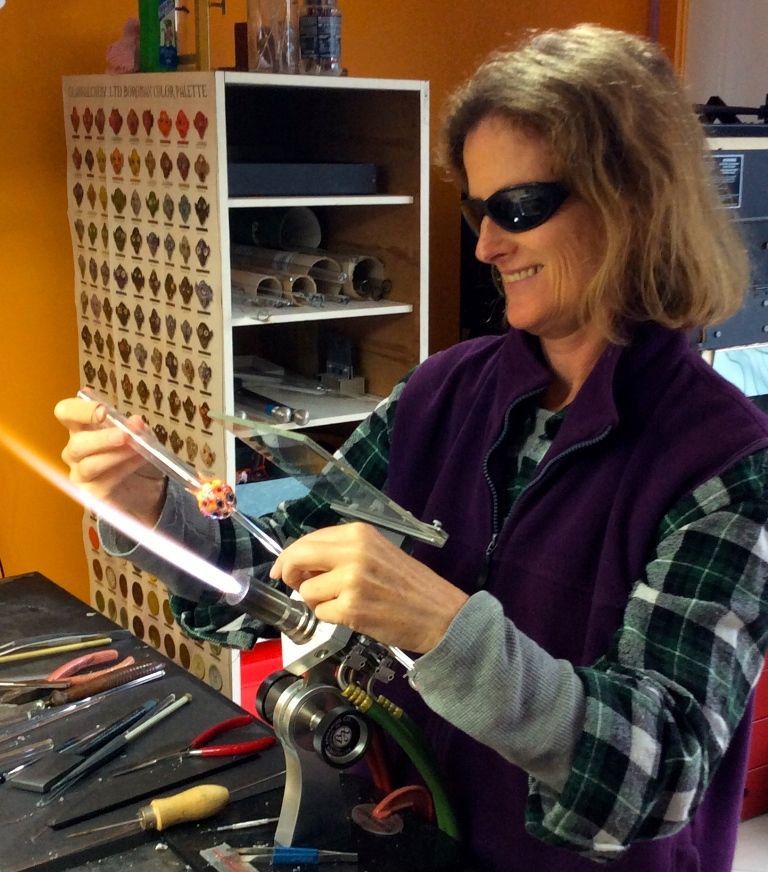
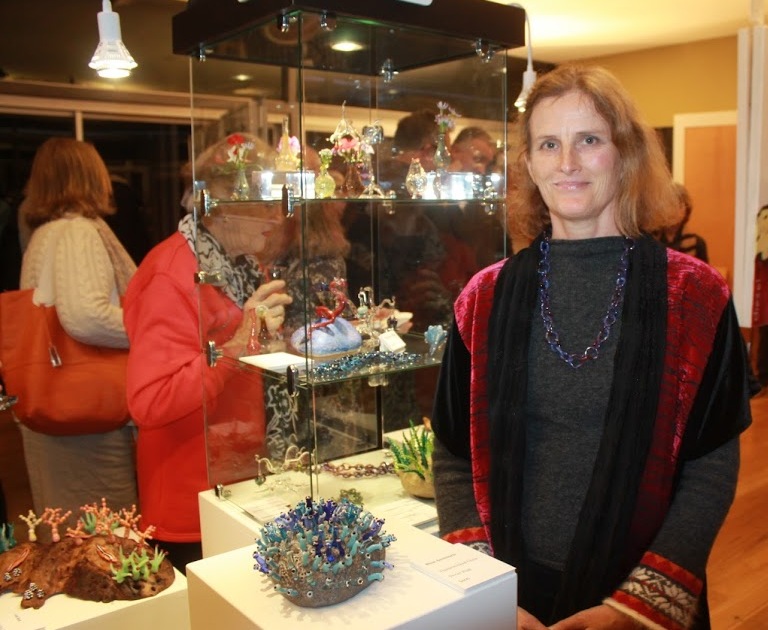
Penel Bigg
Website: www.firebirdbeads.com
The first time anyone sees Penel Bigg's beautiful and sculptural glass works they fall in love with them - they literally look good enough to eat. A lifelong passion and curiosity with everything natural has coalesced into an ever evolving development of using glass to create works that resonate and communicate something sublime and essential, something that reminds or quickens of a childhood when you wanted every lolly, and lots of them - that's how beautiful Penel's works are, you want all of them, lots of them.
Fire Bird Beads is her teaching studio and also open to the public as part of the Open Studios of the Pittwater Artists Trail. In 2016 the Trail has something happening on the first weekend of each season. All studios are open on the first weekends in March, September and December and there is a group exhibition on the first weekend of June.
This year's Winter Exhibition will be held in Avalon Beach SLSC from June 3rd to 5th. This week we share a small insight into one of Pittwater's wonderful Artists who works with a material she swears has a life of its own...
When were you born and where did you grow up?
I was born in the ’60’s and grew up in Castle Hill. This was when the area was still green belt and full of orchards and poultry farms and a lot of bushland. We had a couple of acres with a horse, ducks, chooks, guinea pigs, rabbits and a dog. It was a very free range childhood spent almost entirely outdoors exploring the surrounding bush and getting up to various sorts of mischief. School holidays were spent caravanning out west and then later we spent a lot of time in Bellingen after my parents bought a property there, at the end of one of the valleys.
Where did you go to school?
I went to a few different schools but left early, school didn’t really agree with me. I moved to Bellingen as soon as I could and embraced the hippy lifestyle - living out in the bush at first in an old cow bale and eventually building a handmade house. No electricity or running water or phone or any other mod cons, we didn’t even bother with doors or windows. Most of the time we were outdoors in those beautiful valleys with their lovely rainforest, rivers and creeks.
Where did your fascination with glass begin?
Really early. I remember we had some cabinets with “precious treasures” in them which we, as children, weren’t allowed to play with except on special occasions. I still have a few of my favourite pieces from these, one of them is a small red fox with a white duck in its mouth, I think it’s from Lauscha. The other is a little painted wooden mushroom from which dangles about a dozen small intricately detailed glass faces. These always fascinated me.
I also remember very clearly a primary school excursion to The Rocks and the old Argyle Centre and there were some flameworkers set up in the courtyard there making glass lace boats and swans and so on. I was so mesmerised they had to practically drag me away.
Years later I actually spent a few days learning to blow glass with Peter Minson and got goosebumps when he told me he was one of those flameworkers, it felt like something had come full circle.
As a child, especially after my parents had bought the place in Bellingen there wasn’t much money so you had to make your own fun. Mum had a great garden and I remember building these little gardens; I’d get a plastic plate and cover this in moss and then would pick things, place them in the moss and make miniature landscapes. Later when I started making small paperweights in glass I was reminded of these early miniature environments. I had a small loom for weaving and taught myself how to work with seed beads, two passions which continue to this day.
My mother was a potter and my father painted, so it seemed perfectly normal that making things was what people did and we were always encouraged to have a go at anything creative. After moving to Bellingen I scored an old treadle sewing machine and started a love affair with textiles which also continues to this day. I experimented with felting, natural (solar) dyeing, batik, machine embroidery, wearable art and quilting. After moving to Armidale I also started papermaking, bookmaking and calligraphy and started selling all these things at the local markets, in between working for the Department of Health in residential care, raising two children on my own, and starting to study at UNE.
When did you start working in glass – how did that begin?
While in Armidale, I found a book by Cindy Jenkins called ‘Making Glass Beads’. I didn’t know how to access any of the equipment or materials (this was pre-internet, things are so much easier now!). The only glasswork I’d seen being done, apart from that long ago Rocks expedition, was furnace work which is also fascinating to me but requires large expensive-to-run equipment and a lot of room, so I had always thought a life in glass was out of my reach.
This book changed everything, it became like my Bible, I would read it cover to cover, thinking ‘this is amazing, I have to do this’. It was still a few more years before I met anybody who was actually making beads, and a few more years before I moved back to Sydney in 1999 and found a class. I was doing a Textile class at Kuring-Gai Arts College and one of my fellow students said ‘there’s a glass bead making class next term, let’s sign up’. So we did, and that was the end of that. I had spent 11 years studying part time while working and single parenting, had just finished my Honours in Linguistics and had great plans for continuing on with an academic career.
But it turns out you can set up at home quite easily and cheaply in a small area using a Hot Head torch which runs off an lpg gas bottle. I used this slow, noisy, gassy beast for the first three years, working in a small corner of a cobwebby tin roofed garage, boiling in summer and freezing in winter, but so enamoured with melting glass I barely noticed the discomfort.
What was the first thing you made?
A really really bad bead. It’s a good idea to keep the first beads you make because you’re so proud of them and think they’re marvellous but when you look back at them in a years time it’s hilarious – they tend to be lumpy, misshapen little things and are a great touchstone for seeing how quickly you can improve your glass skills if you stick at it.
You are at the point where you have expanded your knowledge considerably though, and now offer classes?
Yes, I’ve been lucky enough to do classes with some really incredible flameworkers, Bernie Stonor and Loren Stump in particular. I’ve been teaching on and off for about 7 years, more regularly since we moved to the Northern Beaches 4 years ago and I graduated from the corner of the garage to a large beautifully equipped studio. This year has seen some big changes and I’m just putting together a new class schedule, a few details below but more to come on the website in the next week or two.
You have Bernie Stonor coming to teach some classes this year too, who is he?
Bernie is one of Australia’s most experienced glassworkers and a wonderful teacher and he has been a major influence for me since we first met about 9 years ago.He lives on Kangaroo Island where he has his own gallery. During the Winter months the gallery is closed and I am able to get him up here for a week of workshops. This year he will be here the first week in June – these are Master Classes for experienced flameworkers and always fill very quickly.
What are you making at present?
Right now I’m in the middle of experimenting with a brand new idea, a bit too early to talk about that one. But I’ve also been taking some of my coral elements used in the sculptural works and making them into wearable pieces.
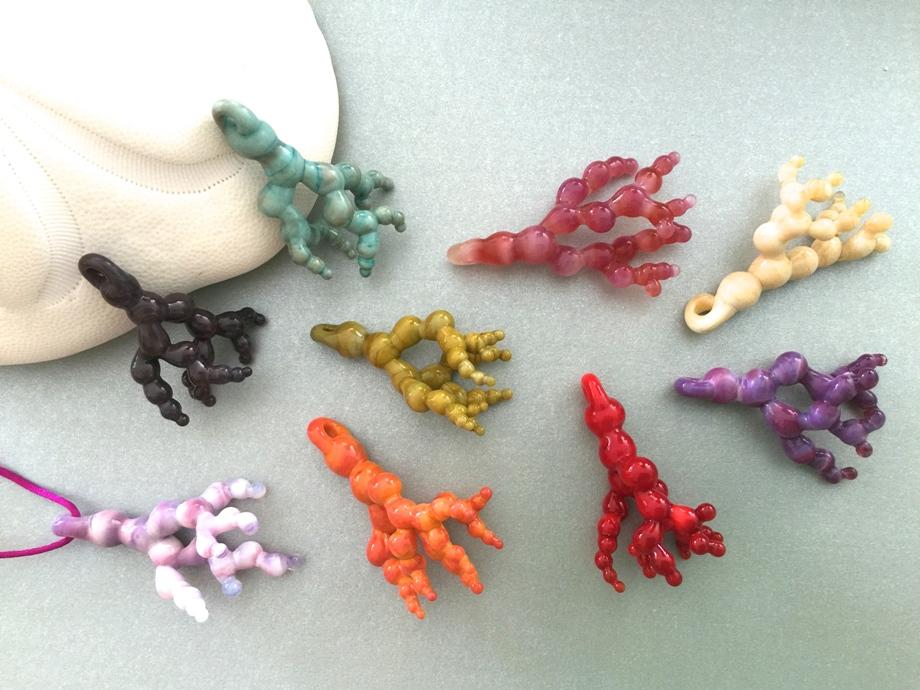
Working with glass is like working with a living thing, you introduce it into the flame and as it softens its consistency becomes rather like honey and so you learn to use heat and gravity and air from your lungs to guide and manipulate this amazing material into whatever shape you want. It becomes a dance. But a dance in which sometimes one partner leads, and sometimes the other.
I will often begin working with a clear intention but sometimes the glass may lead me in a different direction - this collaborative relationship makes flameworking endlessly fascinating and fun. One of the most important things to learn, besides reading the heat base and remembering that gravity exists (glass will drip onto the bench if you forget!) is to learn to surrender to that flow, to follow and see where it might lead.
Since moving to the beaches my work has taken on a distinctly marine flavour, and with the help of my partner I’ve been making larger sculptural pieces from multiple components. For my most recent I found a broken mirror in an Op shop which had the most wonderful Pawlownia frame, a cross section of the tree – a fabulous round of wood.
It is big, and required many hundreds of elements, some are blown and some are solid.
This is the most ambitious piece I’ve made so far and it has been on display at Craft NSW for the last 2 months but will be coming home in time for the Winter Exhibition in Avalon in June.
There’s a very beautiful sculptural element to all your work too – how do you do this?
Thank you, I like to think that’s the result of dancing with the glass, sometimes leading, sometimes following. A lifetime of enjoying, appreciating, observing and sketching nature helps too. So much beauty exists and it is a gift to be able to spend a good deal of my time trying to convey the wonder and beauty of the natural world, with a bit of Penel idiosyncratic quirkiness thrown in for good measure.
The Winter Exhibition of the Pittwater Artists Trail at Avalon Beach SLSC (June 4th and 5th, opening night is the 3rd) – what are you going to be showing this year?
I want to show the evolution of the coral pieces I’ve been working on for the last two years. The coral has developed of its own accord into a series which has undergone quite a few changes and I will show three pieces that illustrate this rather well, with the earliest piece, a midway one and the most recent.
I’ll also have a display cabinet filled with new bud vases and earrings, and a selection of marine themed pieces; shells, urchins, coral pendants, squid and octopuses.
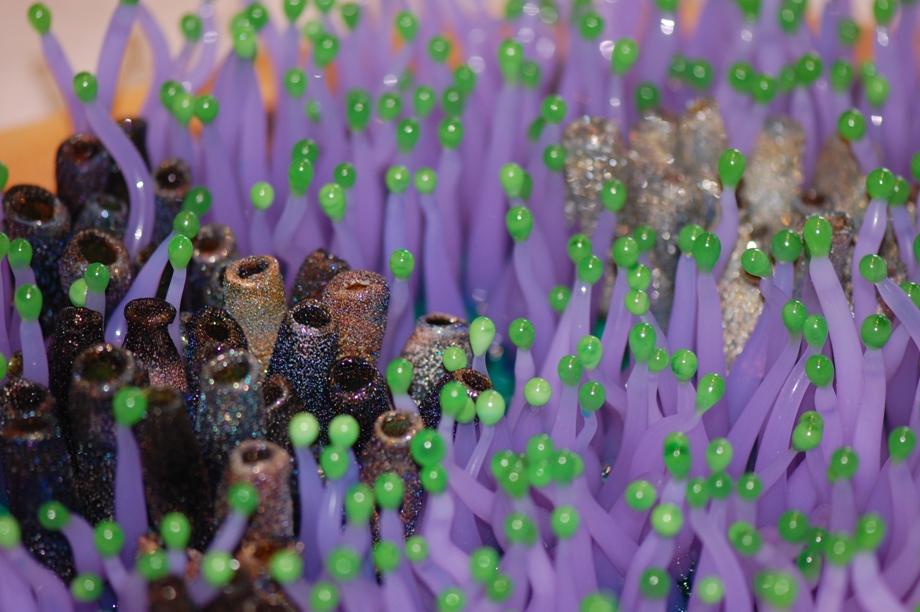
Anemone atoll
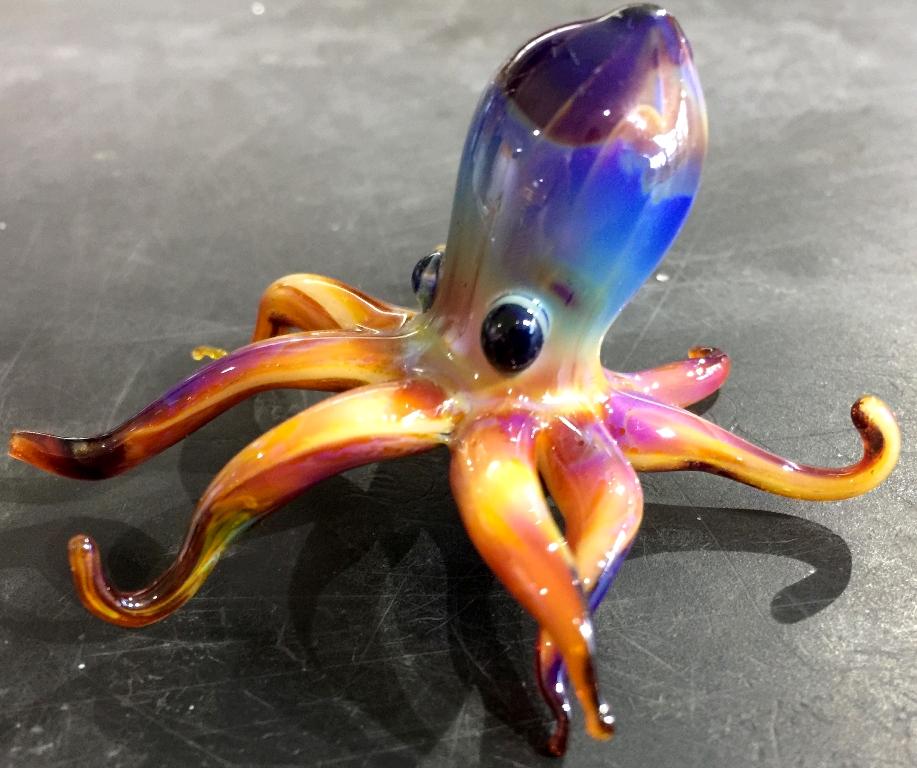
Very appropriate for an Art Show in a surf club!
I know, but with the awful things happening with our climate and the Great Barrier Reef I’m starting to think that the next series will consist entirely of bleached white glass – that would have an impact.
What are your favourite places in Pittwater and why?
My own backyard is one of my favourite places because we back onto the reserve here at Elanora, the boardwalk at Warriewood wetlands, and Irrawong Falls are nearby and a beautiful place to be in. Soon after we moved here my then 85 year old father and I clambered up the waterfall and then followed the creek up to the Wesley Centre - had to because we couldn’t climb back down! It’s a magical place and we feel very lucky to live here.
Wandering along any of our beaches and headlands at low tide is one of my favourite things and can now also qualify as research and development, so that’s a bonus. It is amazing to be living between the marine environment and the bush and to see the development of my glass work as a natural consequence of my environment. None of which is a really a conscious process, walking along the beach, walking around the headlands or in the bush; all this beauty goes in and then if all goes well it gets transformed and comes back out in glass. It’s just lovely the way that happens all by itself.
What is your ‘motto for life’ or a favourite phrase you try to live by?
I must admit I’ve never really adopted one, my parents were such shining examples of enjoying nature, working hard and being kind and honest that these sentiments underpin everything rather than a motto.
But a few years ago during a dark time battling the self-doubt that we all sometimes suffer from (ie, why do I bother making all these things?!) I read this inscription while browsing in a bookstore:
“If you bring forth what is within you, what you bring forth will save you. If you do not bring forth what is within you, what you do not bring forth will destroy you.”
And since then whenever creative self-doubt strikes I remember these words, although I’m not sure this was quite what Thomas meant by it (googling this quote just now I find it is in fact from the Gospel of Thomas). It helps me to remember that in the end I make things because I can’t not, and doing so is in fact a process of self-discovery meaningful perhaps only to me, but that is more than enough reason to continue.
Schedule for classes
Mondays 1 - 4pm - borosilicate for beginners, blown and solid work
Tuesdays 1 - 4pm - beadmaking for beginners, new 8 week term begins June 21st
Half Day Taster Workshops begin at the end of June.
Please see website for more details or contact Penel on 0422 437 812
At: www.firebirdbeads.com/classes